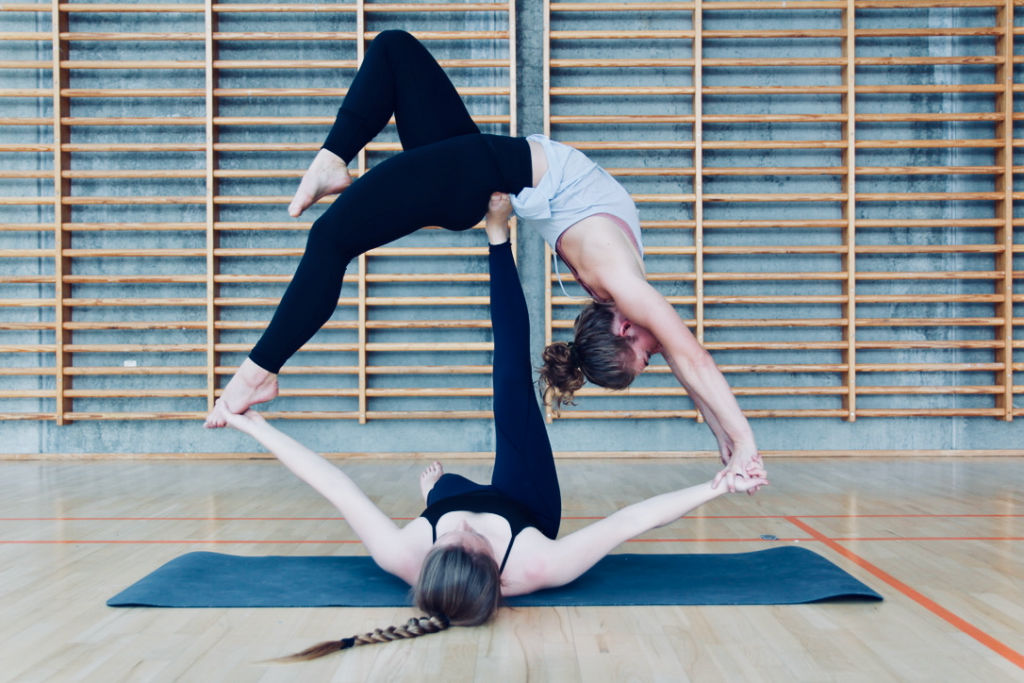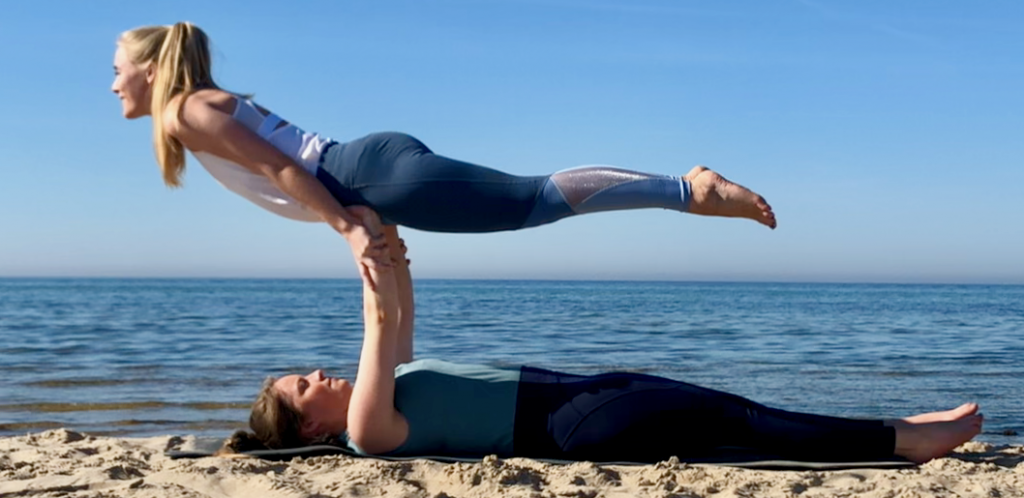Acro Yoga is a partner activity and thus it takes two or more people to practice. But what are the roles in Acro Yoga?

The Base
There can be one or more bases in acroyoga, but in its most common (and simplest) form there will be only one. The base has contact with the floor and carries the flyer. The base’s contact with the floor can be either with the back (L-basing, with feet in the air), feet (standing acrobatics) or belly (belly basing, quite rare).
The Flyer
The flyer will, for most of the time, not have any contact with the floor, and will instead move around on top of the base. Again, there are tricks in which more flyers are involved, but in its basic form it is 1 base to 1 flyer.
The Spotter
The spotter is responsible for protecting mainly the flyer from injury during a fall. The spotter can either prevent the fall (corrective spotting) or ensure a slow landing, thus avoiding injury. However, the spotter role can also be filled by either the flyer and/or base – called self-spotting. This is often practiced once the two have become very comfortable with a trick, and know how to fall safely to the ground.
This role is often the most overlooked (especially on the internet). Acro Yoga tricks that are photographed are often well within the limits of the people involved, and thus there is no need for a spotter. Nonetheless, in the daily Acro Yoga practice, where you often challenge yourself to the limits of your capabilities – and thus have a high risk of falling – the spotter is invaluable and your best friend.

